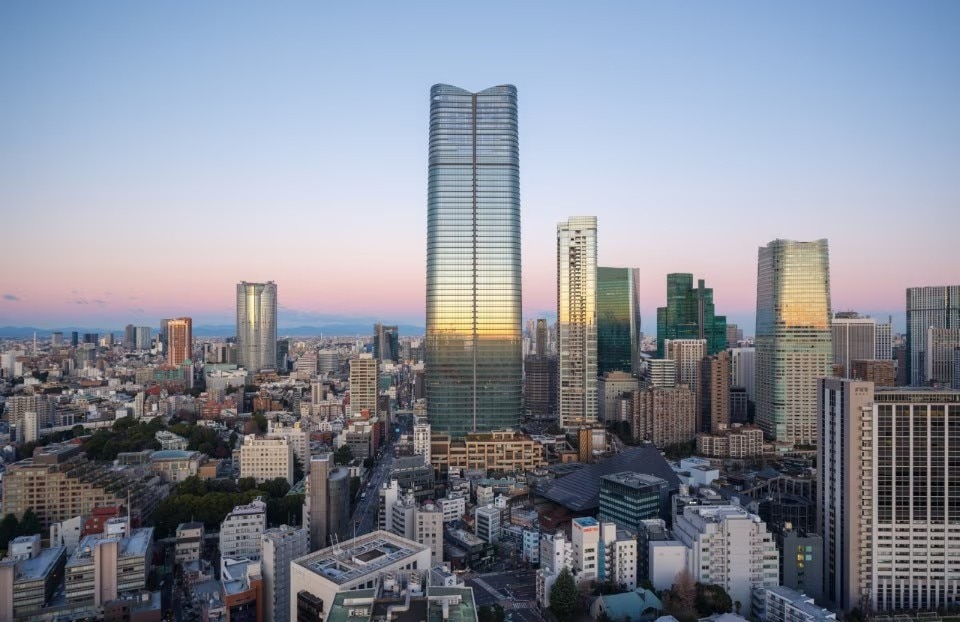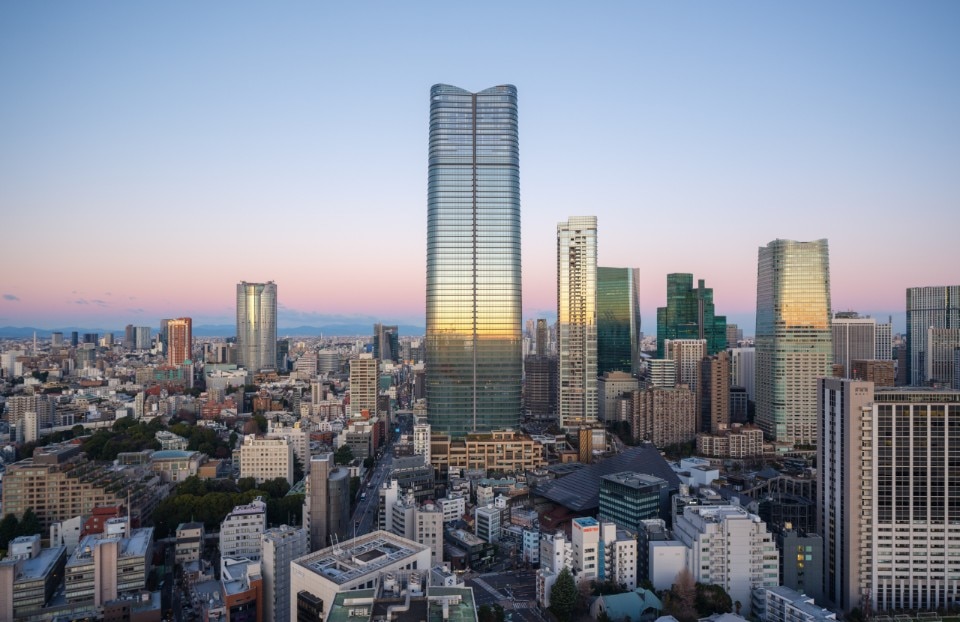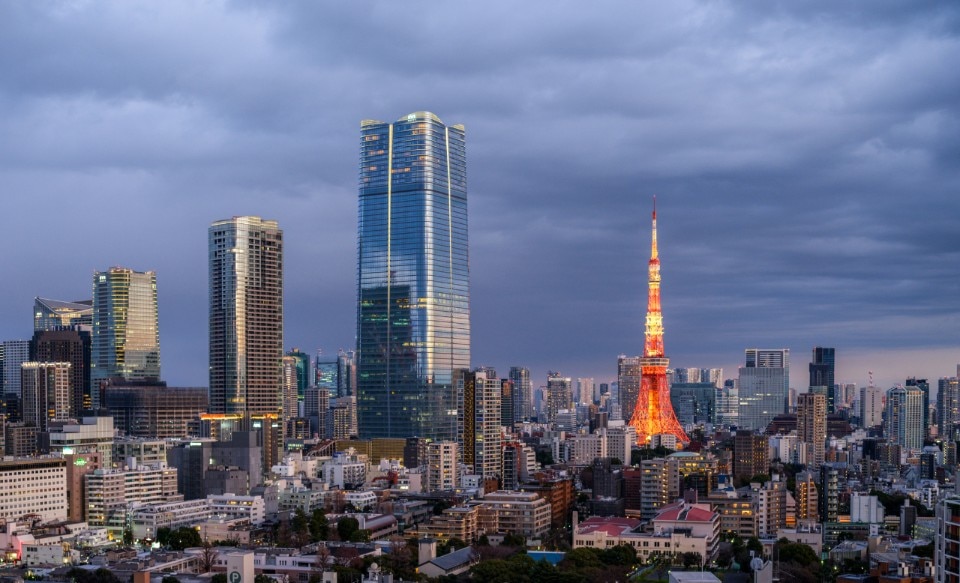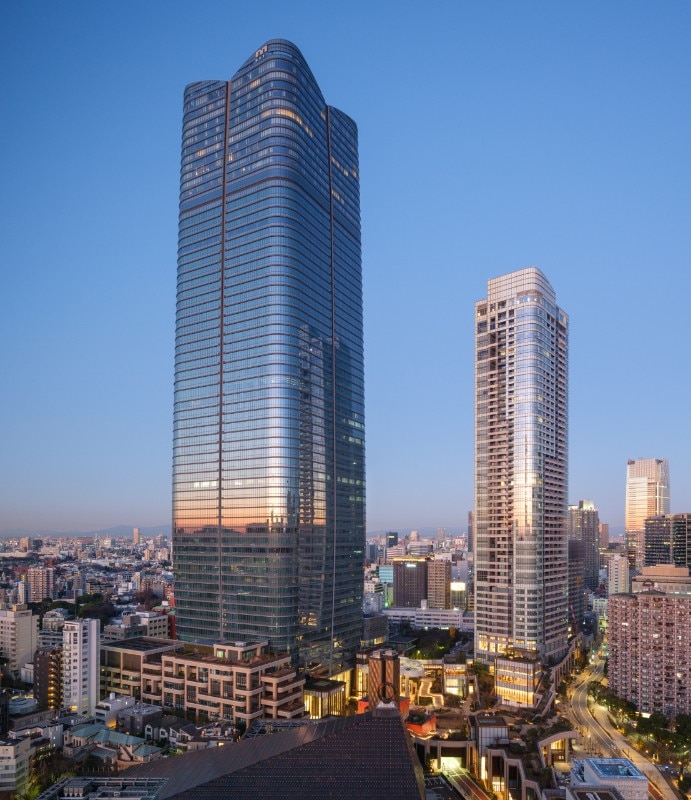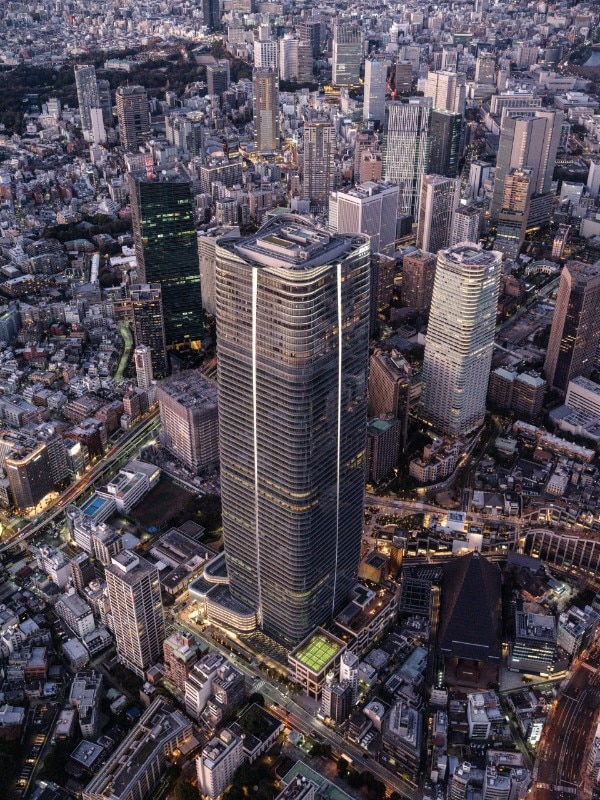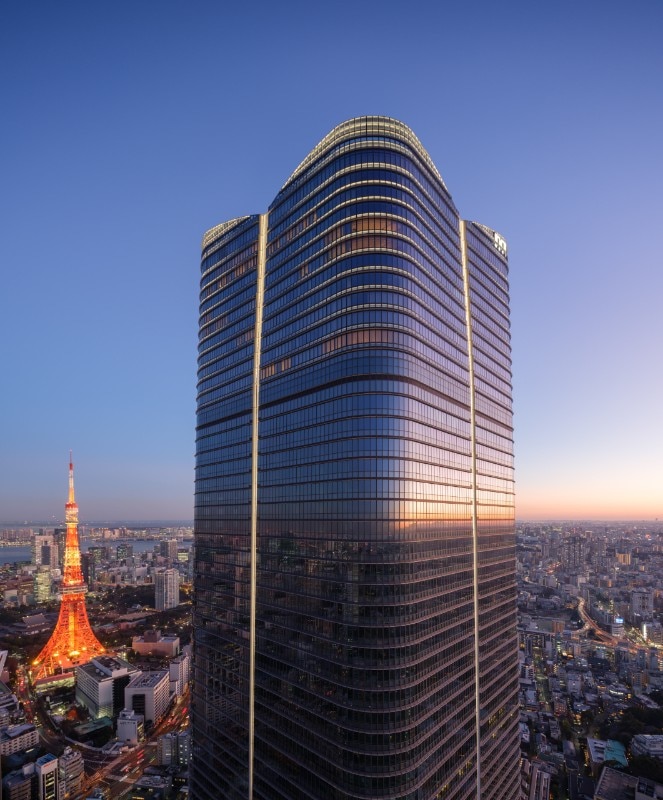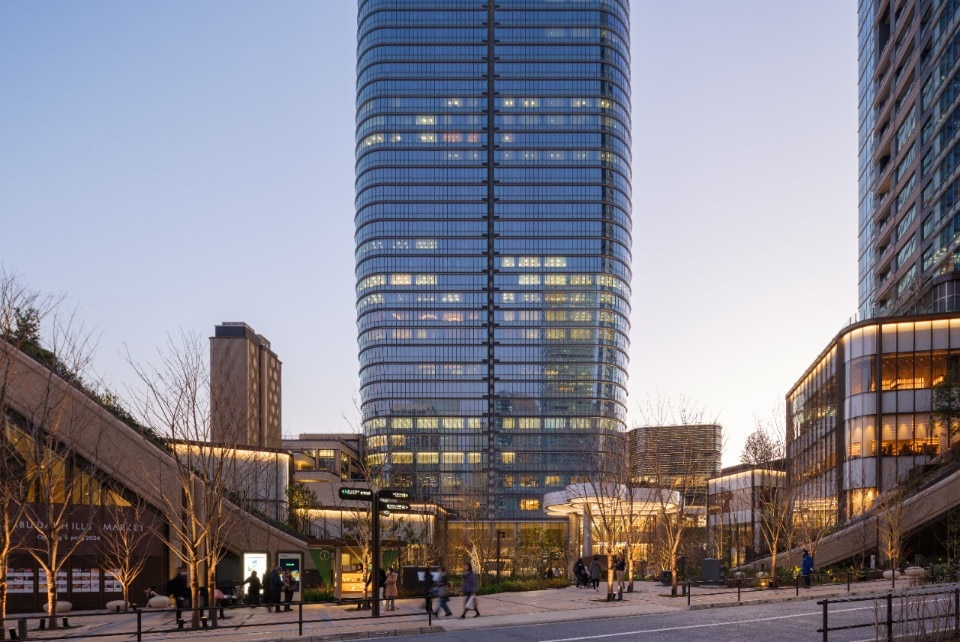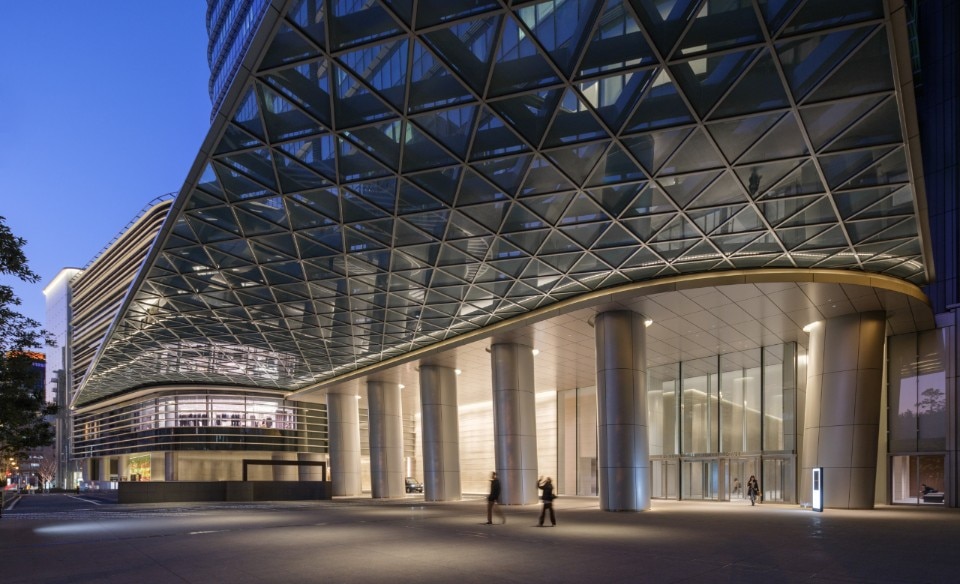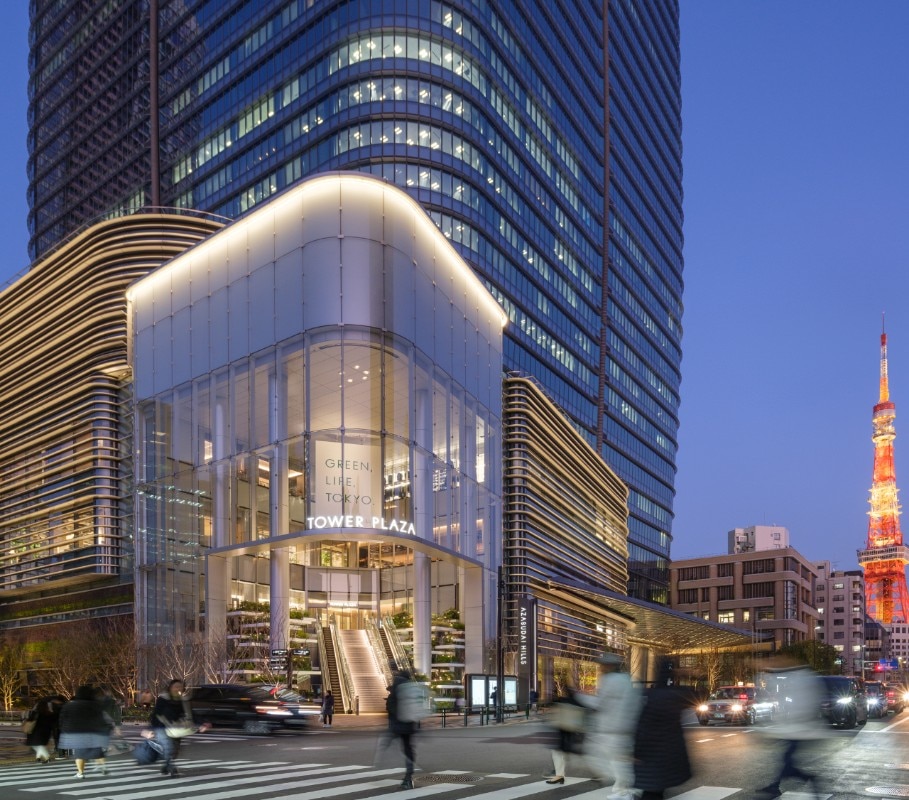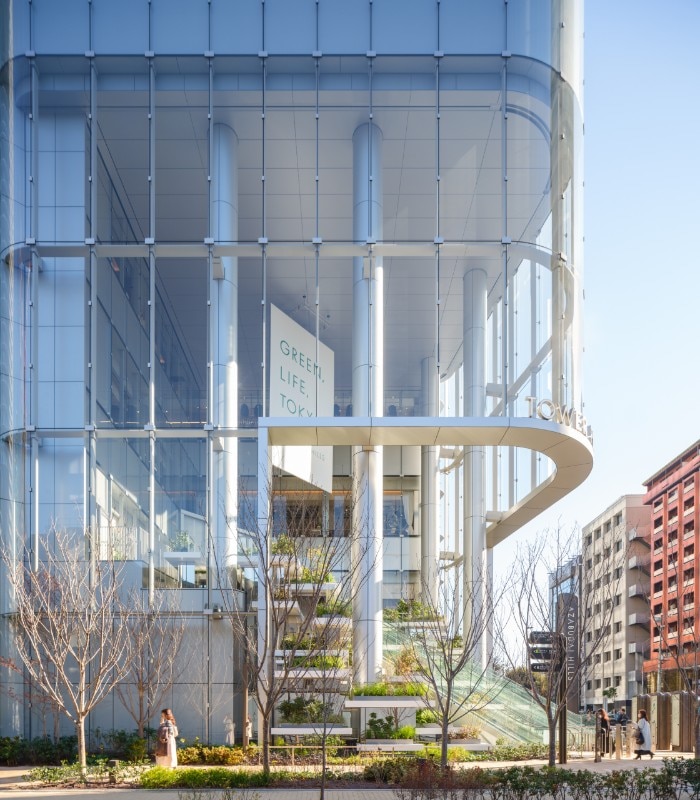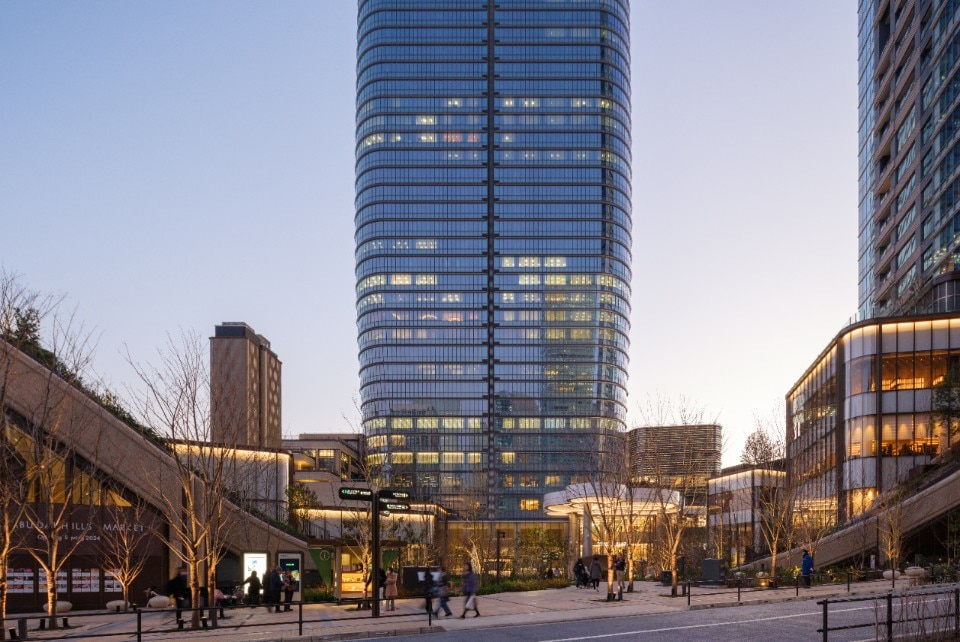Pelli Clarke & Partners have unveiled Japan’s tallest new building, marking the launch of the Azabudai Hills district in central Tokyo. At the heart of the new urban development, the Mori JP Tower rises 330 meters, establishing a new landmark in the city skyline.
Azabudai Hills—a dynamic mixed-use district—is among the largest private projects in the history of the Japanese capital. Pelli Clarke & Partners have shaped the urban design and architectural approach of its 8 hectares, with an overall master plan and three towering structures. The district aims to attract approximately 30 million visitors annually.
The Mori JP Tower is clad in an elegant façade of pearlescent gray glass and is crowned with four petals of curved glass. The tower gleams at night with bands of integrated lights designed by lighting design firm L’Observatoire International, stretching from the street towards the sky, encircling the crown.
At street level, public spaces, parks, and green areas (featuring 320 types of plants, an urban orchard, and a large lawn for gatherings), pedestrian pathways, retail, and a vast market support social life. About 24,000 square meters—a third of the site—is dedicated to green space. The design of the public space and ground-level architecture was conceived by Heatherwick Studio, while the commercial space was created by Sou Fujimoto Architects.
Energy supplied to Azabudai Hills is fully traceable by tenants through an app, is zero-emission, and comes from renewable sources. Moreover, the project harnesses various sustainable technologies, such as utilizing heat from wastewater and reducing CO2 emissions in the entire district by around 70 tons per year. Across the site, rainwater is collected and treated for reuse in green irrigation. Wastewater from residences is recycled and treated for use in office floor bathrooms, and water-saving fixtures throughout the complex contribute to a 40% reduction in water consumption compared to LEED standards.


